Hobart
Hobart is the capital of Tasmania. It’s renowned for its stunning harbour and rich history. The city has a thriving arts and culinary scene. From Mount Wellington (Kunanyi), you have stunning panoramic views of the city and the Derwent River. If you like adventure there are plenty to choose from. Mt Wellington: Hiking or racing down on a bike. On the water: sailing, kayaking or wildlife cruising.
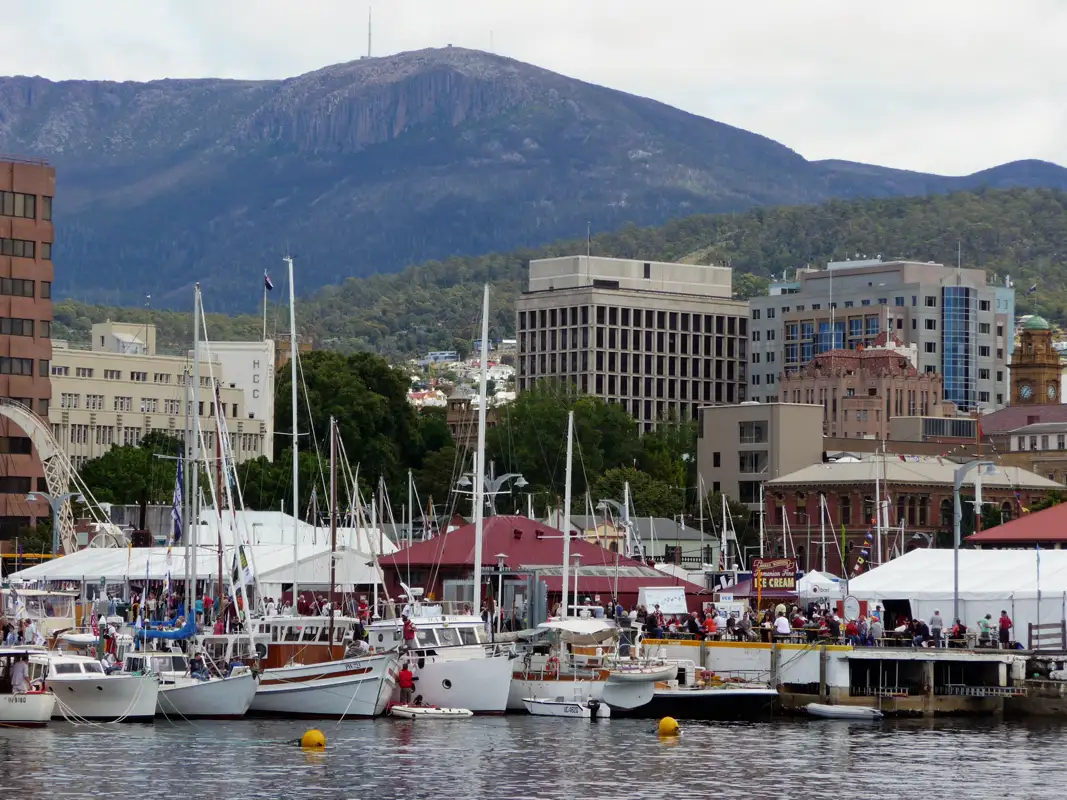
It’s always fun for us to spend a few days exploring Hobart. Wondering what to do first in Hobart? Well, you can head to the Waterfront, go for a hike at Mount Wellington, browse through the Salamanca Market, or visit the Mona Museum. And if that’s not enough, you can also check out the Botanic Garden, the Wooden Boat Festival, or the Clarence Jazz Festival.
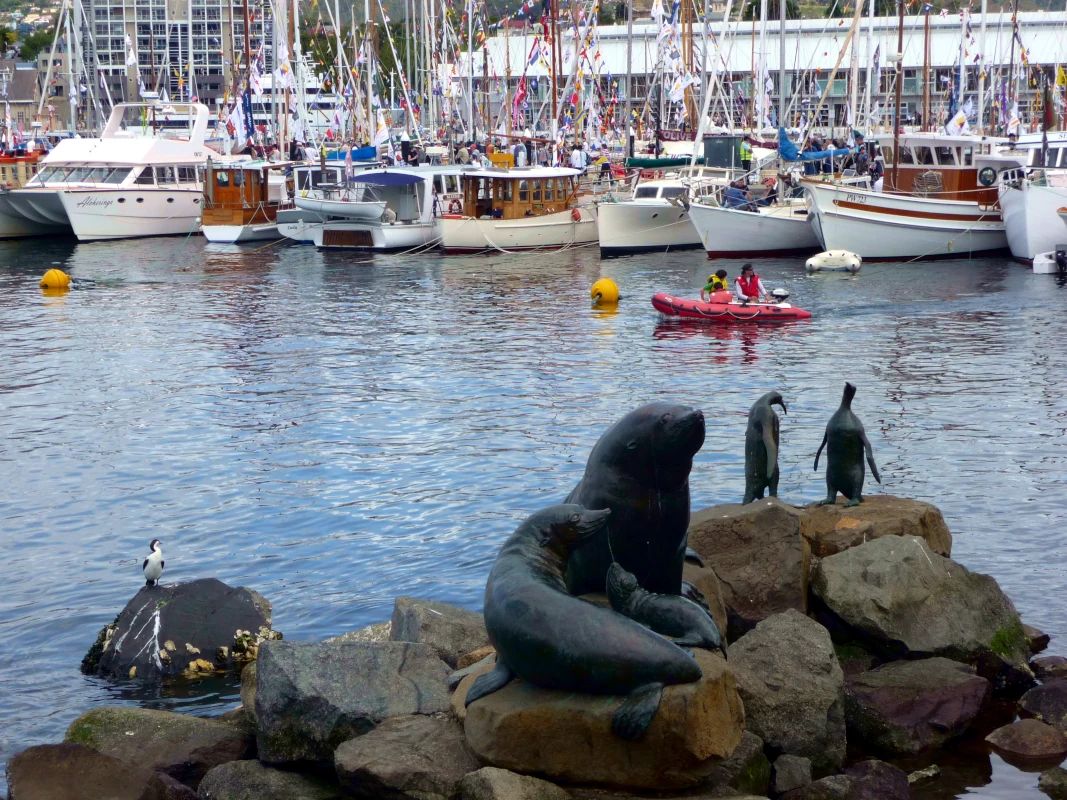
While in Hobart, the vibrant waterfront is a must-visit. Constitution Dock, home to part of Hobart’s fishing fleet, is not only used by fishing boats but also by personal yachts and various other vessels. This iconic area is best known as the finishing line for the annual Sydney to Hobart Yacht Race. We always have a walk along the waterfront to enjoy fresh seafood from the many stalls or dine at one of the excellent waterfront restaurants. You can also explore the nearby Salamanca Place, known for its charming shops and lively market, or visit one of Hobart’s historic buildings.
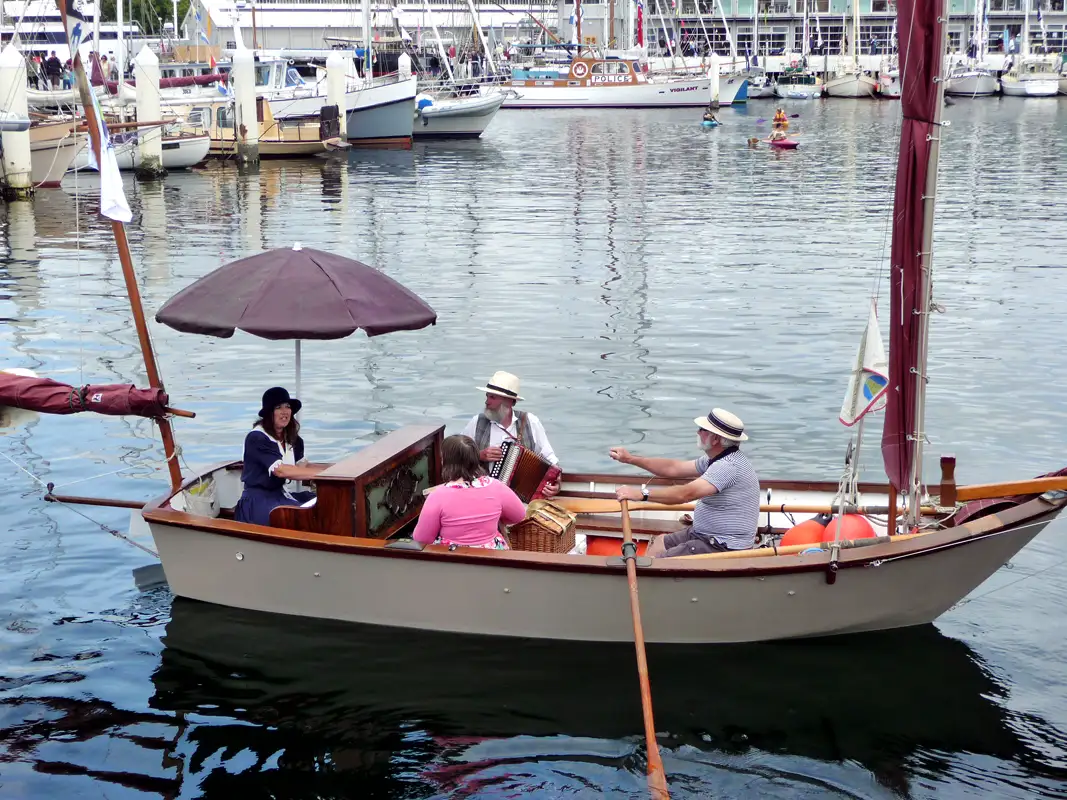
The Hobart Wooden Boat Festival is held every two years. When we were in Hobart during the festival, we enjoyed the historic tall ships, classic yachts, and all the other wooden boats.The show includes sailing competitions, exhibitions, and live music. It’s a lot of fun!
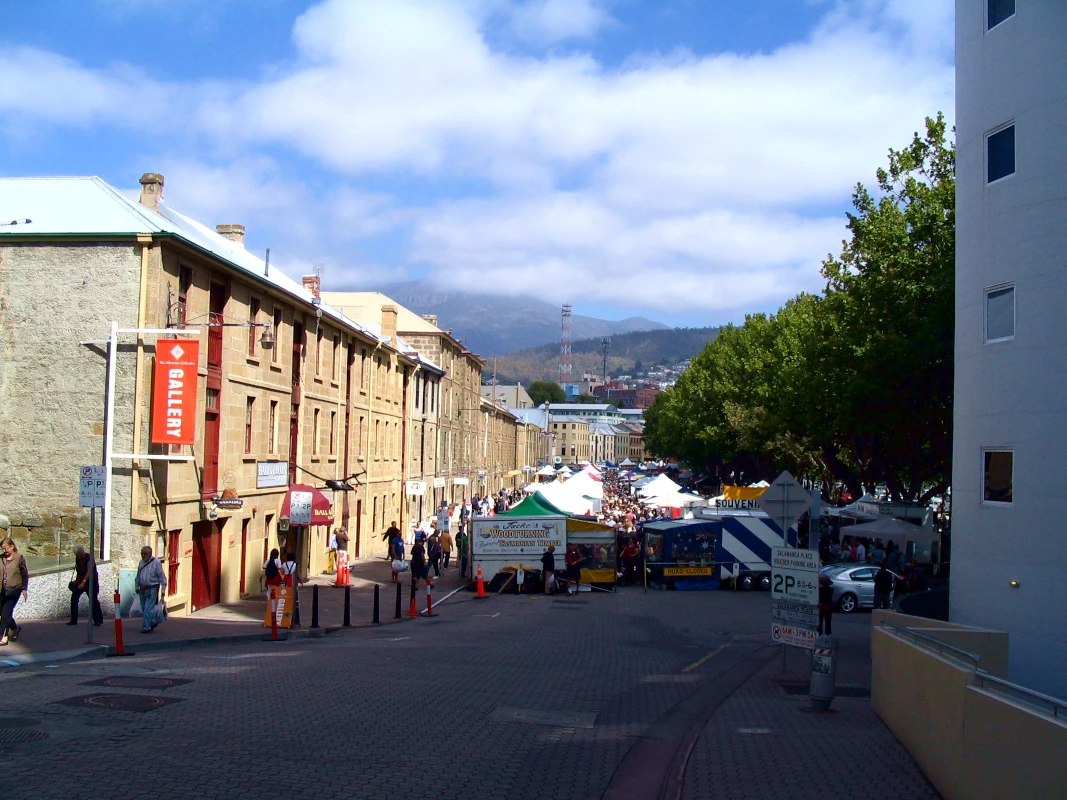
Whenever we’re in Hobart, a visit to the Saturday Salamanca Market is an absolute must. With over 300 stalls, it offers everything from fresh produce and artisanal foods to handmade crafts, clothing, and artwork. Moreover, the atmosphere is vibrant, thanks to street performers and live music that fill the air. Nestled among great pubs and beautiful heritage buildings, the market is also just a short stroll from the waterfront, making it a perfect starting point for a day out in the city.
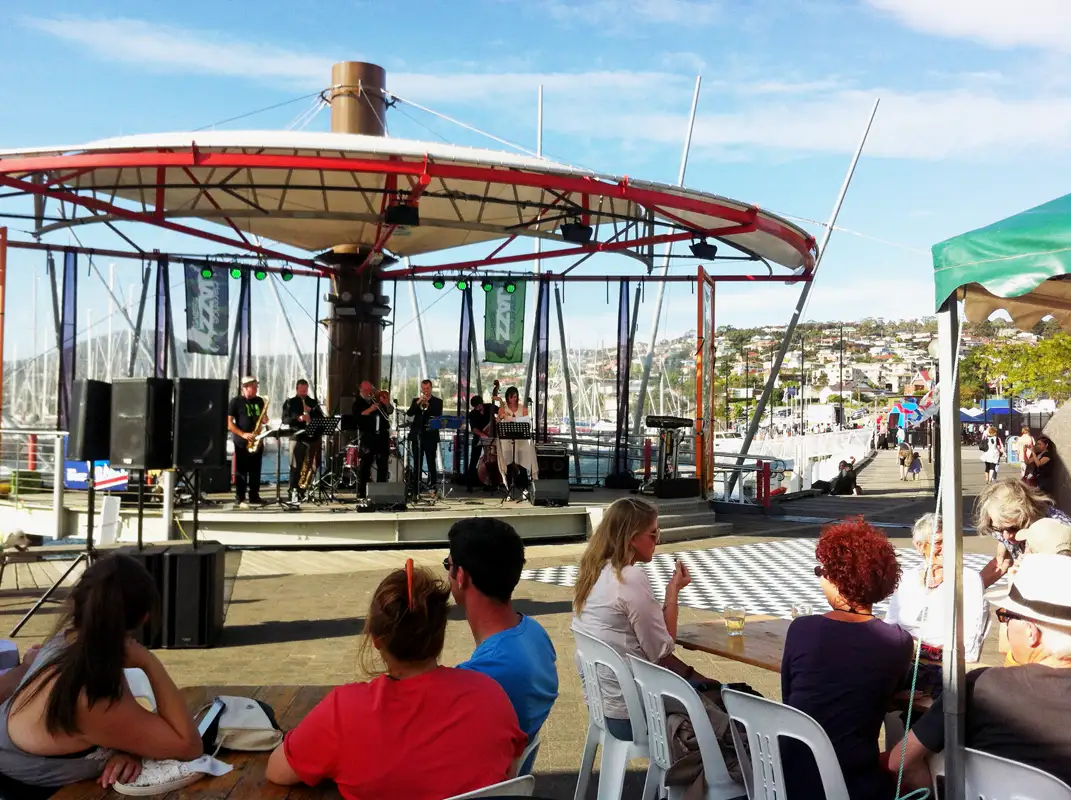
The Clarence Jazz Festival in Hobart is a five-day annual event held at the Bellerive Waterfront. We loved listening to local and international bands while sipping a glass of wine and taking in the beautiful waterfront views. A highlight for us was always watching and listening to “George Washing Machine” and his band.
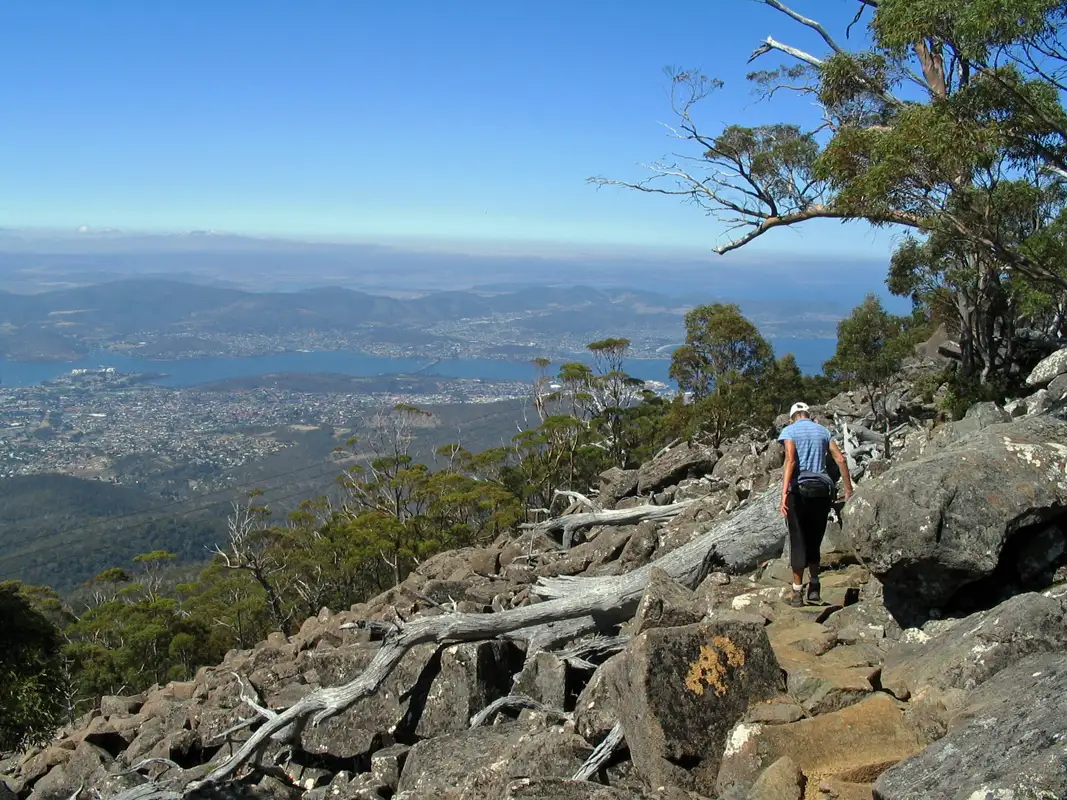
Our favourite walk at Kunanyi (Mount Wellington) was the trail from The Springs to The Chalet via Sphinx Rock. We walked from the car park at The Springs, which is an easy walk to Sphinx Rock, where we had a fantastic 180-degree view of Hobart and the River Derwent. A little further along, the trail becomes more challenging, with short but steep sections, a rough surface, and many steps.
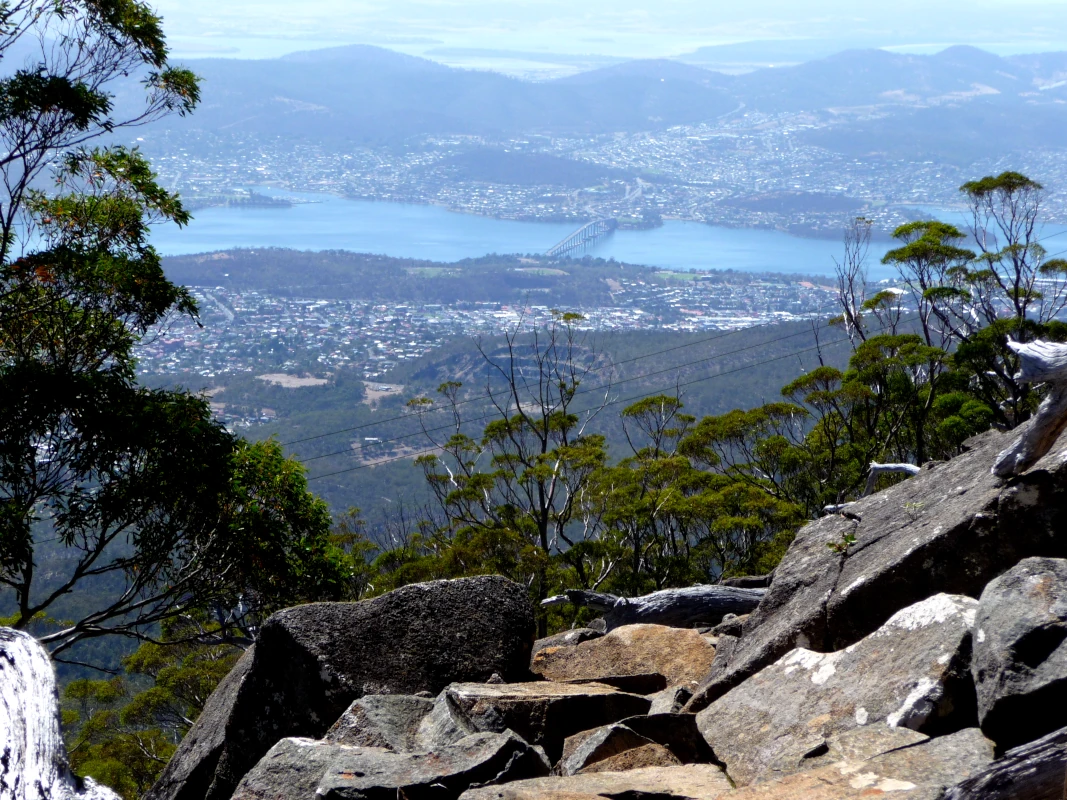
The panoramic view from the Organ Pipes trail of the city, the bridge, and the Derwent River.
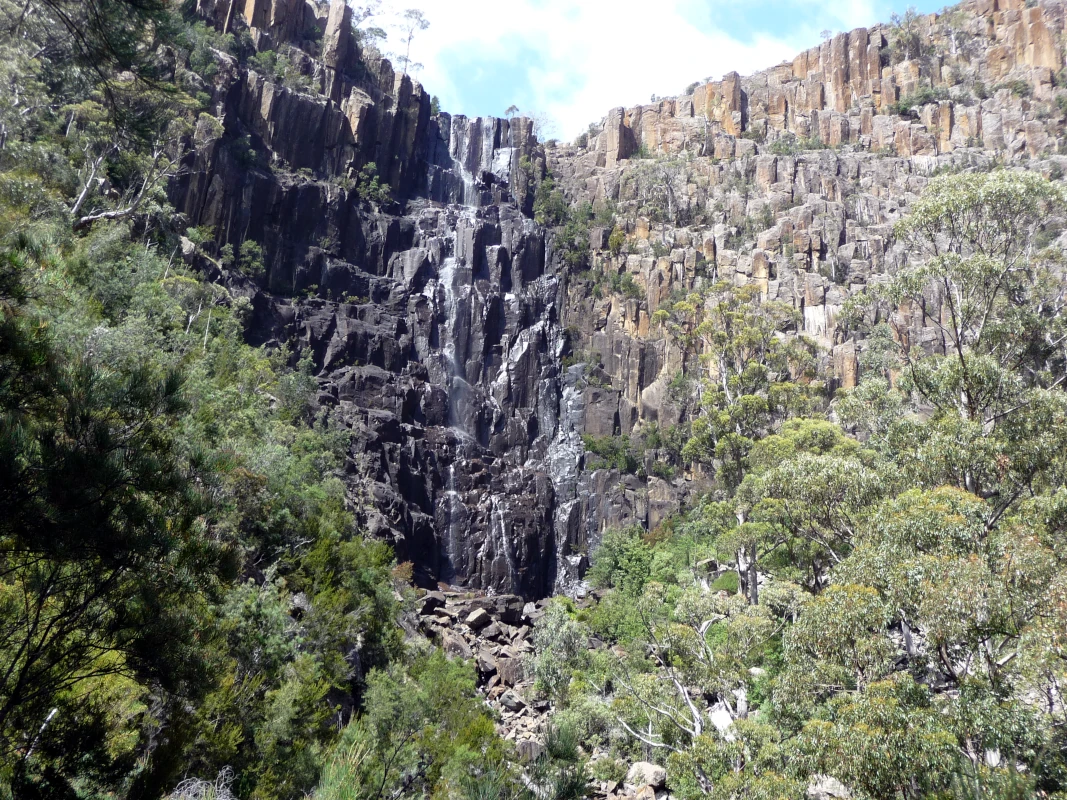
The Organ Pipes columns of dolerite, up to 120m high, were shaped by volcanic activity millions of years ago.
Bruny Island
Bruny Island consists of two islands: North Bruny and South Bruny. They are connected through a long, narrow, isthmus called The Neck. It’s a half an hour drive from Hobart to Kettering and then a short ferry ride. A wonderful place for hiking and or indulgent delicious local food

We spent a few days on Bruny Island, hiking and exploring its stunning landscapes. The highlight of our trip was a fantastic 3-hour Wilderness Cruise with the award-winning Pennicott Wilderness Journeys. Aboard a custom-built boat carrying a maximum of 43 passengers, we cruised alongside some of Australia’s highest sea cliffs, searching for coastal wildlife. We were thrilled to spot seals, dolphins, and a variety of seabirds during the cruise. It was, without a doubt, the best wildlife experience we’ve ever had—thanks in large part to the exceptionally skilled and incredibly helpful crew.
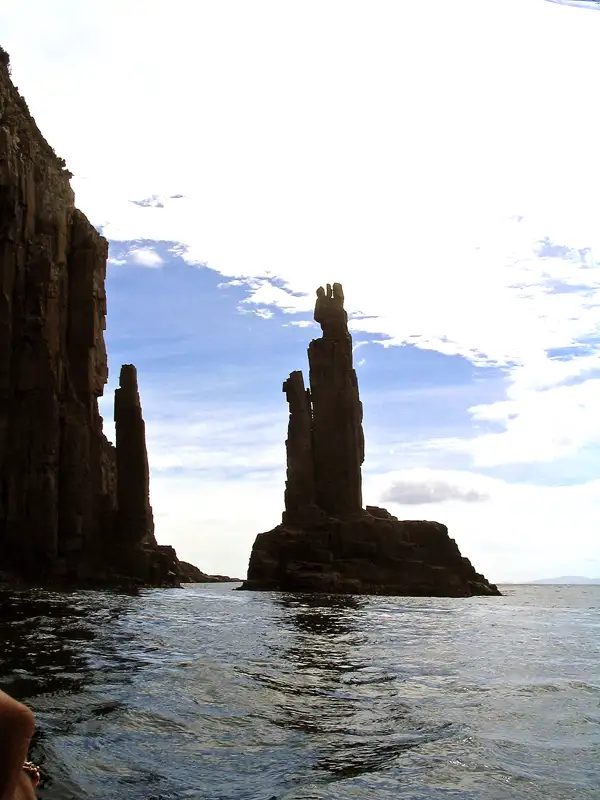
The Bruny Island coastline is spectacular, with towering cliffs, deep caves, and dramatic rock formations. One of Bruny Island’s natural wonders is Breathing Rock, a coastal blowhole visible only from the water. To me, this impressive rock looks like a medieval statue with a crown.
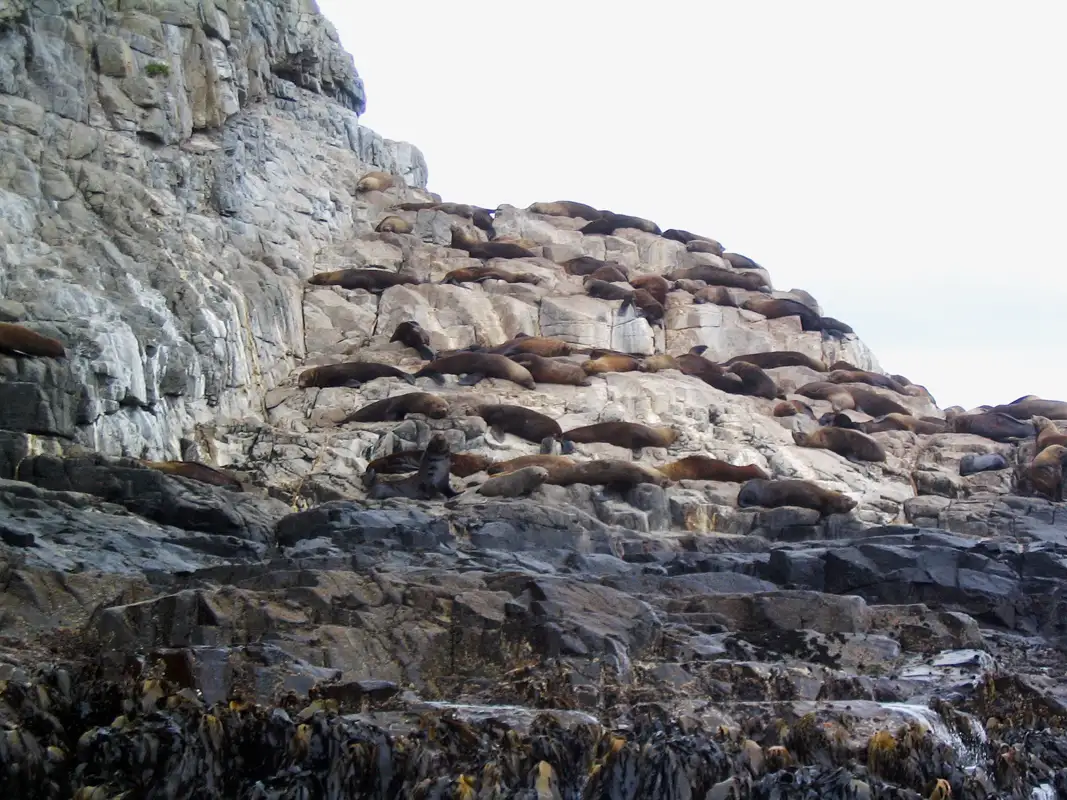
During the cruise, we spotted sea eagles, albatrosses, and playful dolphins. However, the true highlight was spotting Australian fur seals basking in the sun, lounging on the rugged rocks and enjoying the warmth of the day.
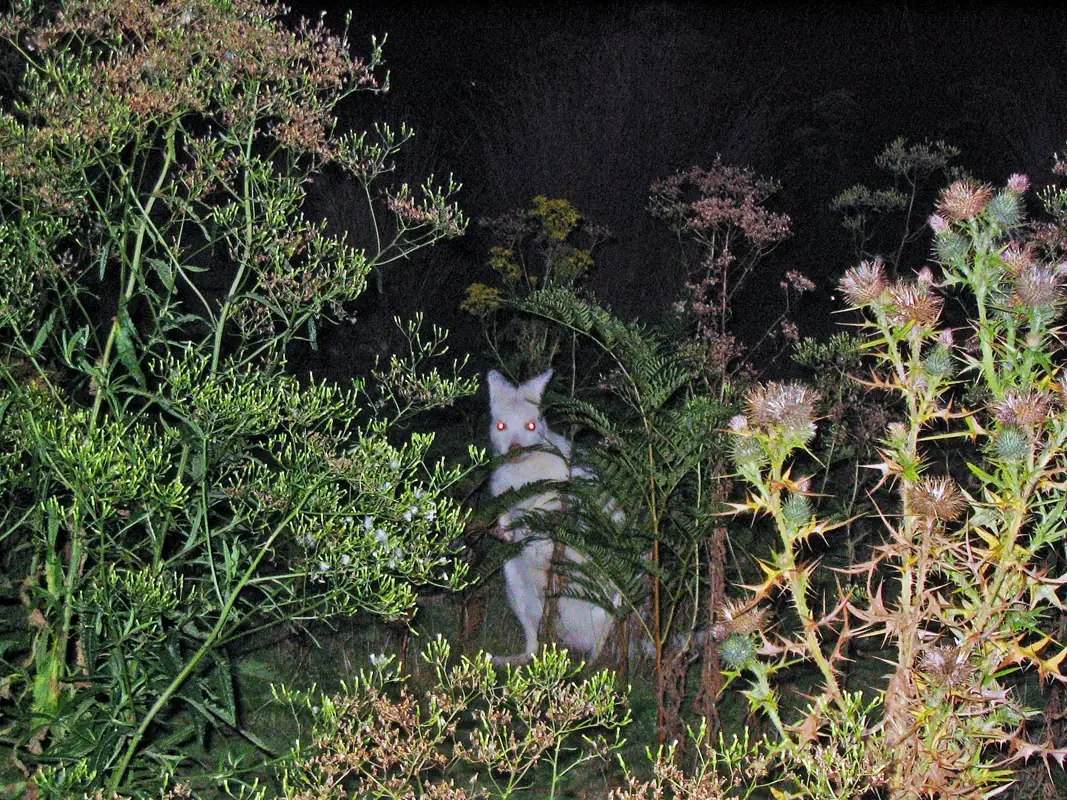
We stayed in the small hamlet of Adventure Bay, known for its beautiful, sheltered beaches. From there, we went on some fantastic hikes, spotting echidnas, pademelons, and Bennett’s wallabies along the way. At dusk, we went out to watch albino Bennetts wallabies, close to our accommodation. Bruny Island is home to around 200 of these unique wallabies, which are more vulnerable to cancer and have poor eyesight. However, they have managed to thrive thanks to the area’s lack of natural predators.
Hartz Mountains National Park
Hartz Mountains National Park is a stunning wilderness area located around 80 km south-west of Hobart. The park is famous for its breathtaking alpine scenery, ancient forests, and glacier lakes. There are several wonderful hiking trails ranging from easy to difficult.
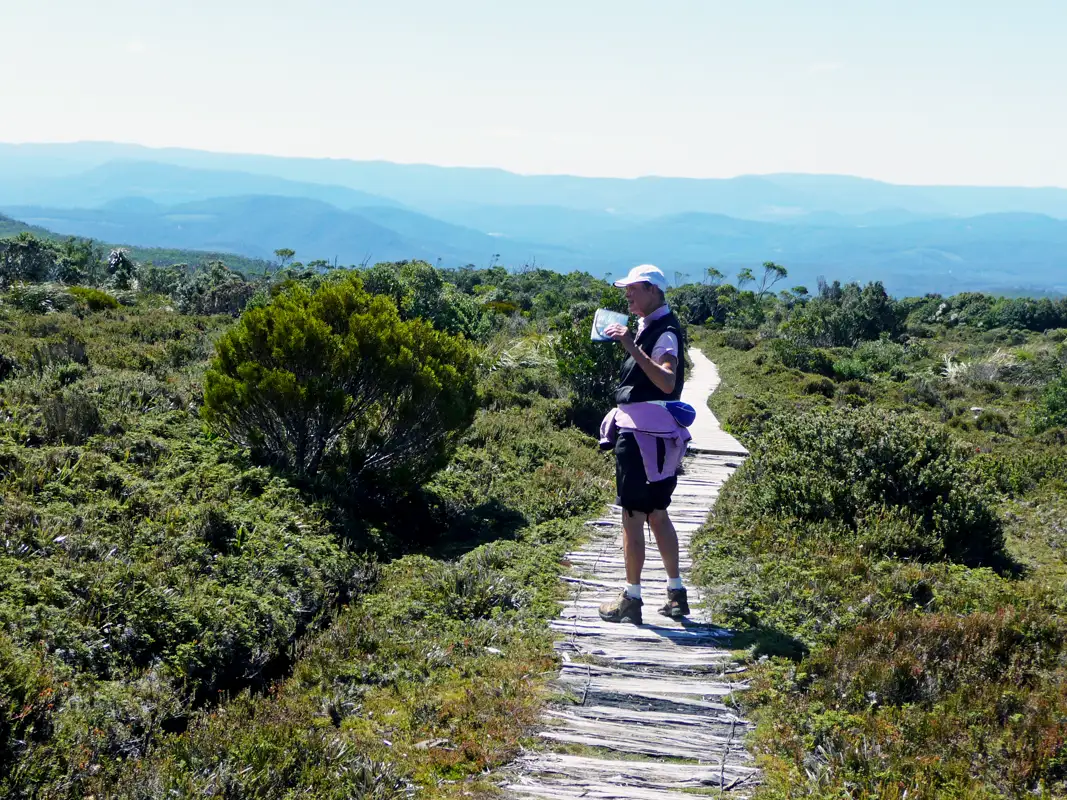
During our many trips to Tasmania, we explored Geeveston in the south, just an hour’s drive from Hobart. We stopped by the charming Geeveston Town Hall Visitor Centre before heading up to our beloved Hartz Mountains. If hiking isn’t your thing, you can drive to the Tahune Airwalk, where you’ll be able to walk 50 meters above the forest floor and take in breathtaking views.

The flora of Hartz Mountains National Park is both diverse and unique. Visitors can explore vibrant alpine heath, Button Grass, lush fern gullies, and a stunning array of wildflowers in all colours during the summer months.
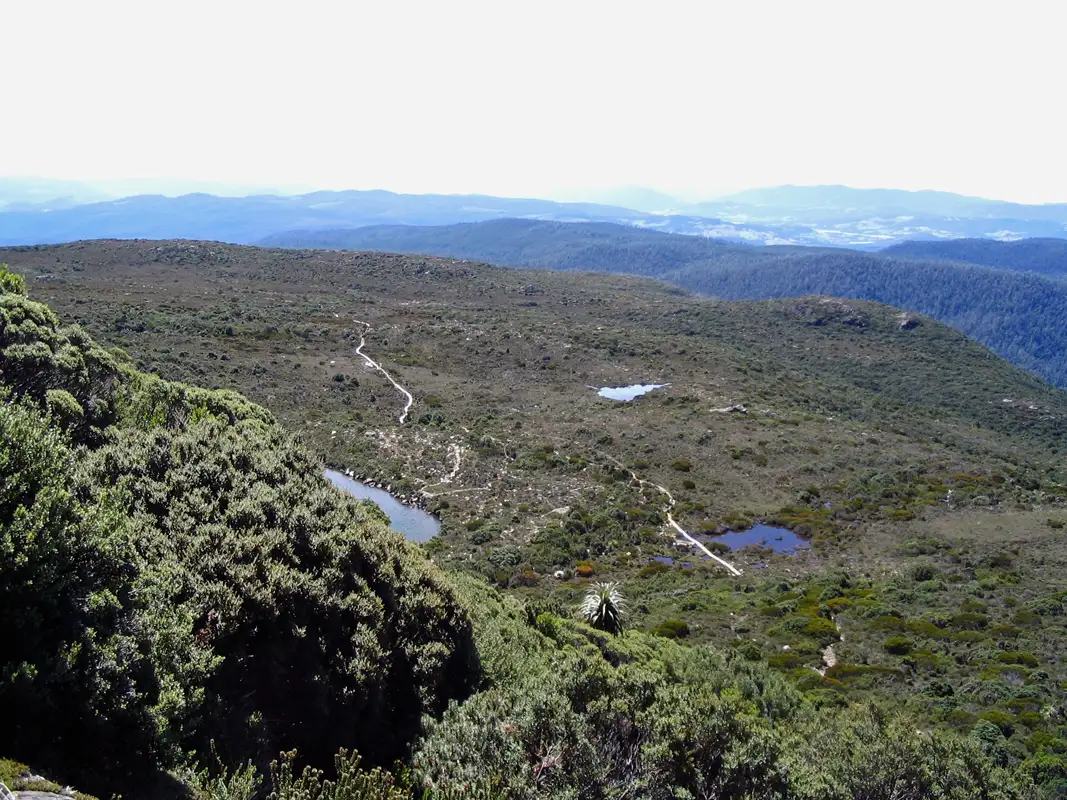
Although we didn’t reach the summit of Hartz Mountains (1254m), we hiked to enjoy the breathtaking panoramic views along the way.
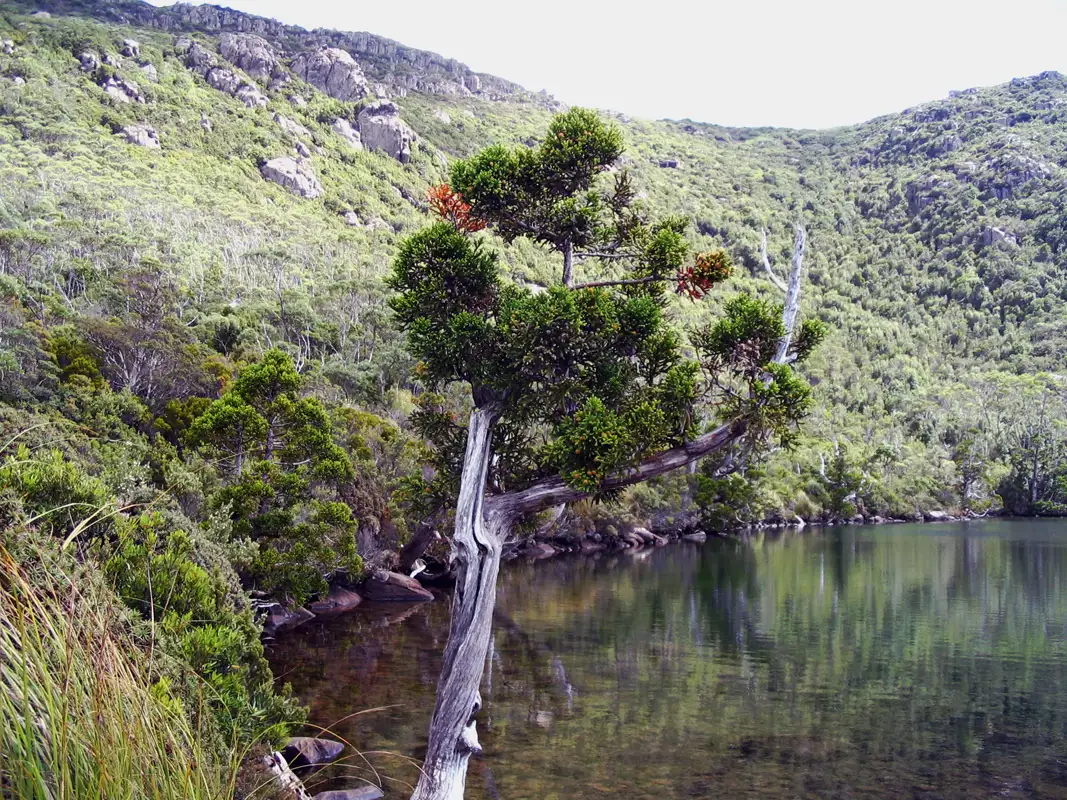
The Lake Osborne Trail is one of our favourite hikes. This fascinating 45-minute walk takes you through a rainforest of myrtle, sassafras, and pandani. Along the way, you’ll pass impressive large boulders known as the Devil’s Marbles. The lake itself is stunning, with crystal-clear waters, and ancient King Billy pines lining the edge. It’s the perfect scenery for a photoshoot.
Duckhole Lake
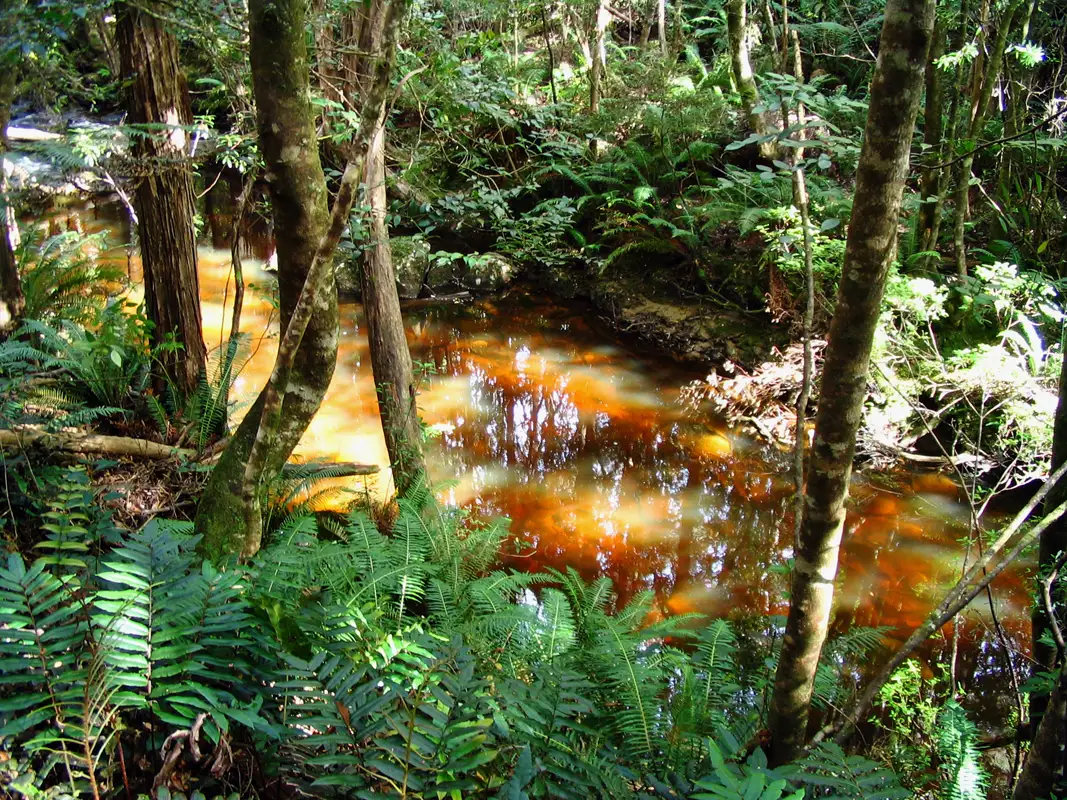
After visiting Hastings Caves and a dip into the thermal springs, we went to Duckhole Lake. The trail is located just south of Dover, but not easy to find. The 4.2km track, most of which is boardwalk, follows a stream through regrowth forest to the lake. If you are lucky, as we were, you can spot Platypus in the stream.
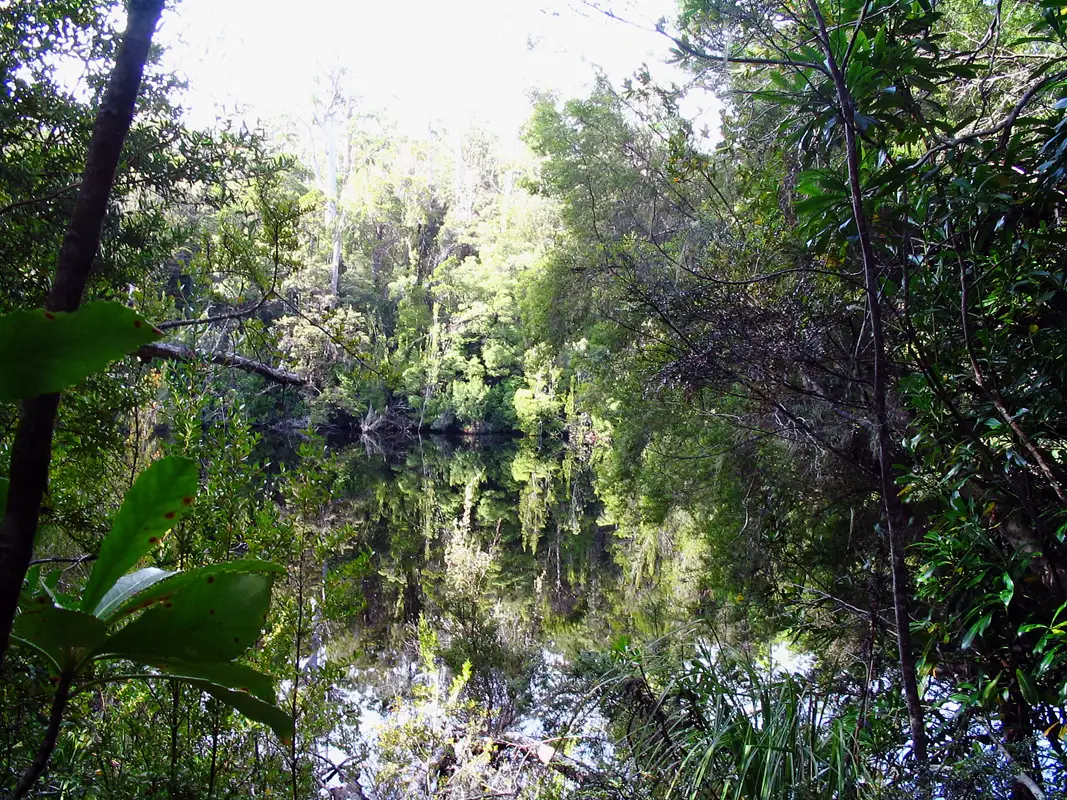
The lake is The lake is actually a flooded sinkhole. While enjoying a picnic, we listened to the songs of birds and the croaks of frogs. The water’s surface was like a mirror, perfectly reflecting the surrounding trees. a flooded sinkhole. While enjoying a picnic, we listened to the songs of birds and the croaks of frogs. The water’s surface was like a mirror, perfectly reflecting the surrounding trees.
South Cape Bay
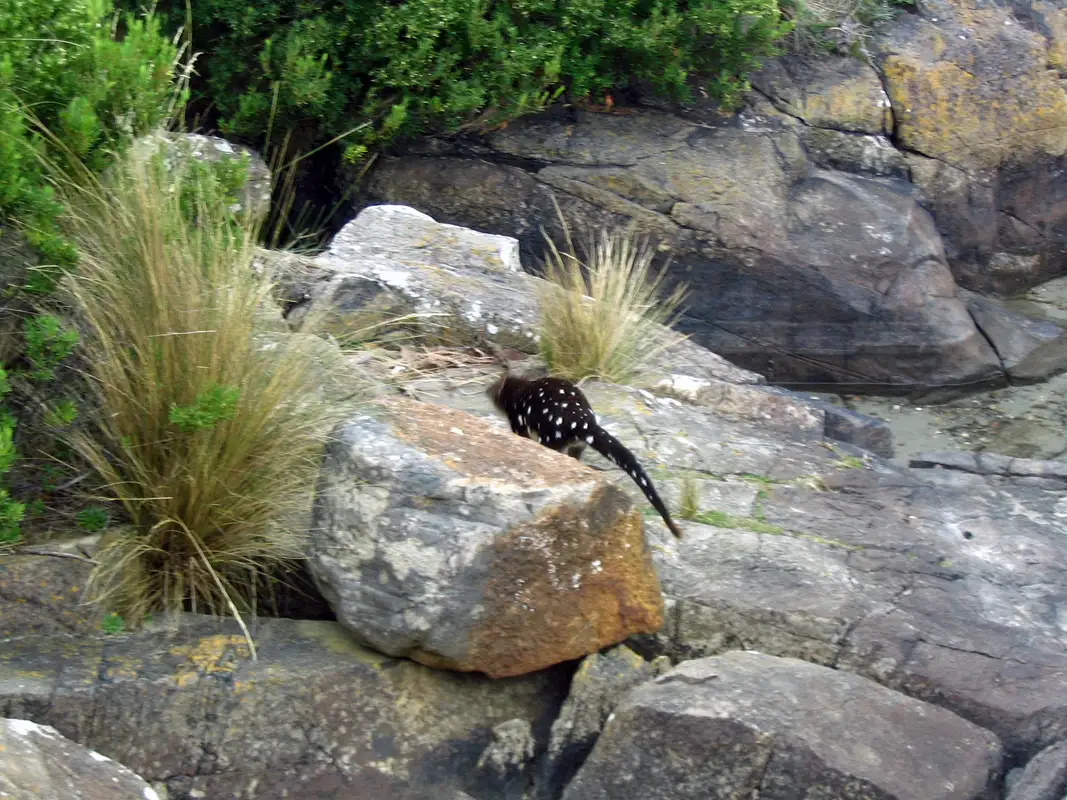
From Huonville we drove to Cockle Creek, which takes about 1.5 hours, to hike the South Cape Bay trail. When we arrived, we were fortunate to see a spotted-tailed quoll, also known as a tiger quoll near the creek.
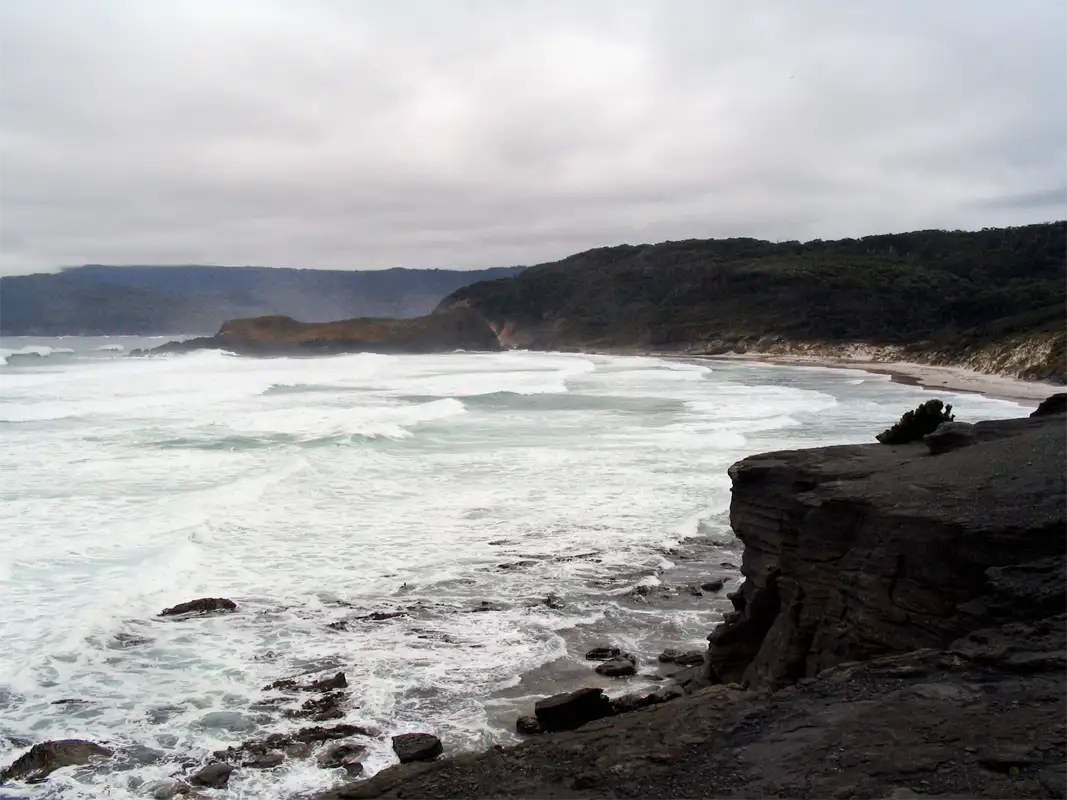
The 16-kilometre return hike to South Cape Bay is a moderately challenging walk and the southernmost day hike you can do in Australia. The trail begins with an easy stroll through woodlands and marshlands, much of it on boardwalks. As you approach the ocean, the terrain becomes hillier, adding a touch of challenge. After the long hike, we arrived at the cliff, from where we had stunning views of South Cape Bay, with the striking Lion Rock to the right.
Tasman Peninsula
The Tasman Peninsula is a beautiful area roughly 90 kilometres from Hobart. It’s a popular site for both nature and history lovers. The Tasman National Park is famous for its high sea cliffs, rock formations like the Tasman Arch and Devil’s Kitchen, and scenic hikes.
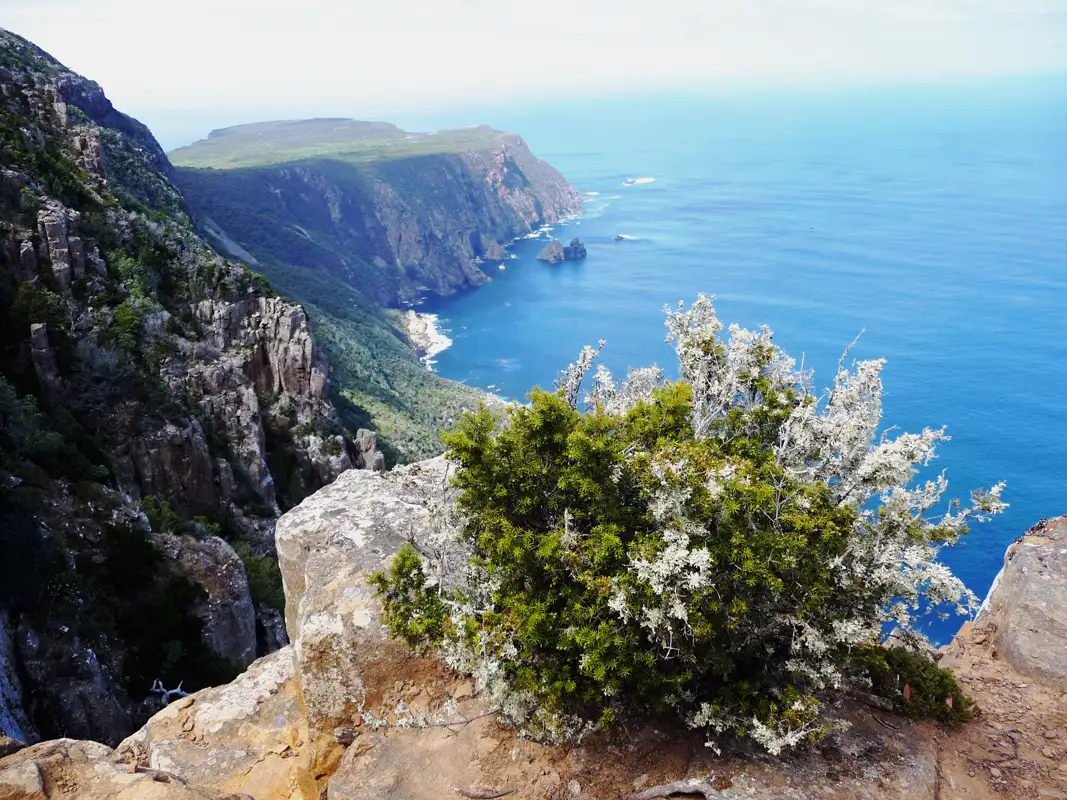
We hiked a section of the Cape Raoul track, soaking in the breathtaking views along the way. With such stunning scenery, we couldn’t think of a better spot to pause and enjoy our lunch why go any further?
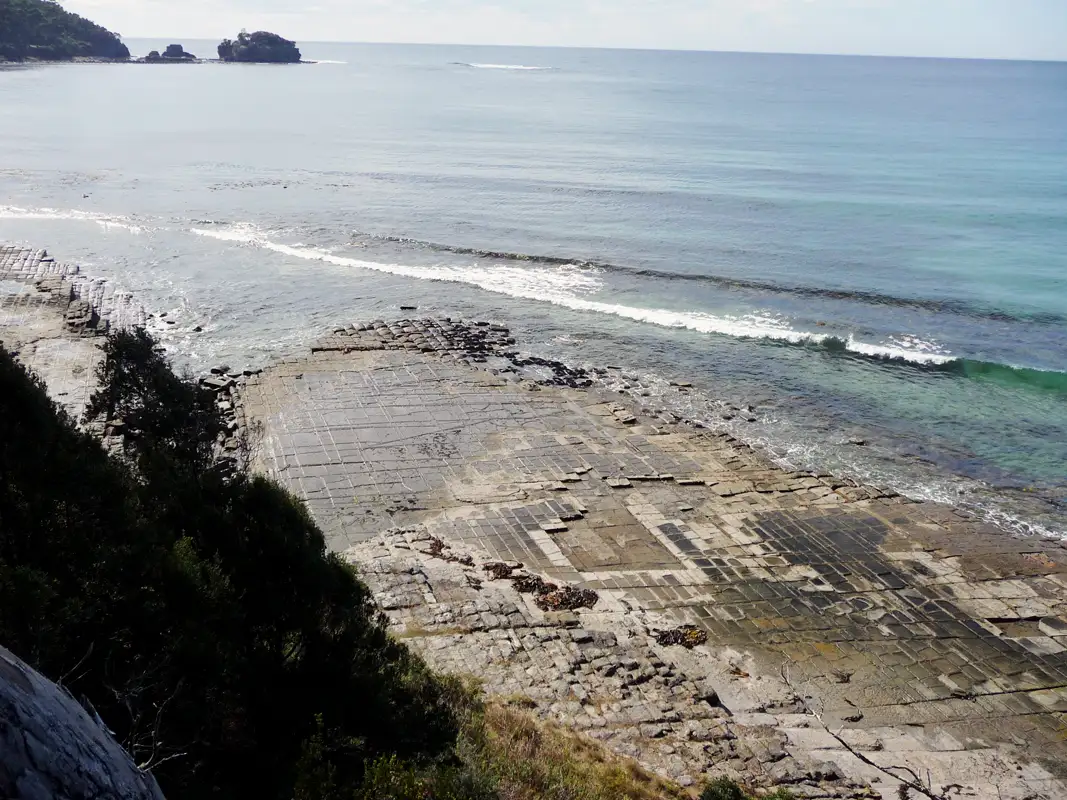
While exploring the Tasman Peninsula, we came across the TESSELLATED Pavement. At first glance, it appears to be a man-made tiled surface. But it’s a stunning natural formation shaped by geological processes over time.
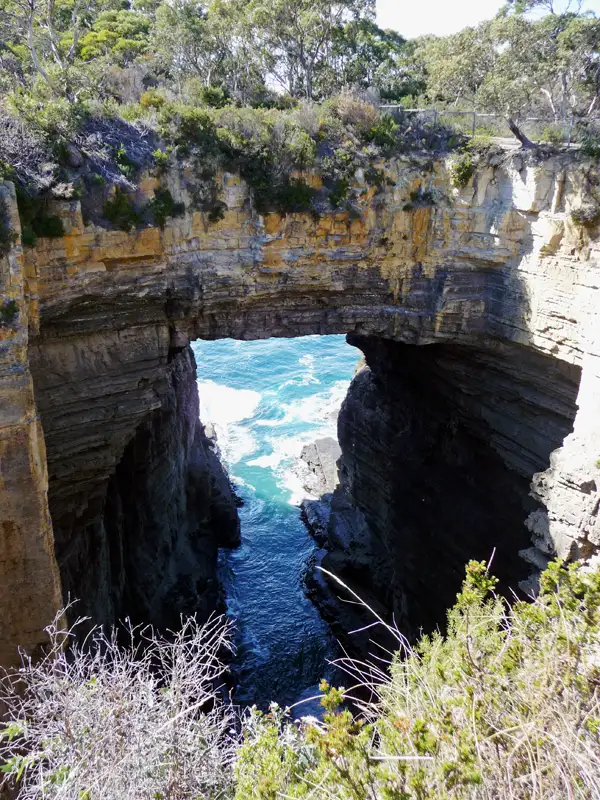
Near Eaglehawk Neck, you’ll find three remarkable natural attractions: the Tasman Arch, the Blowhole, and Devil’s Kitchen.
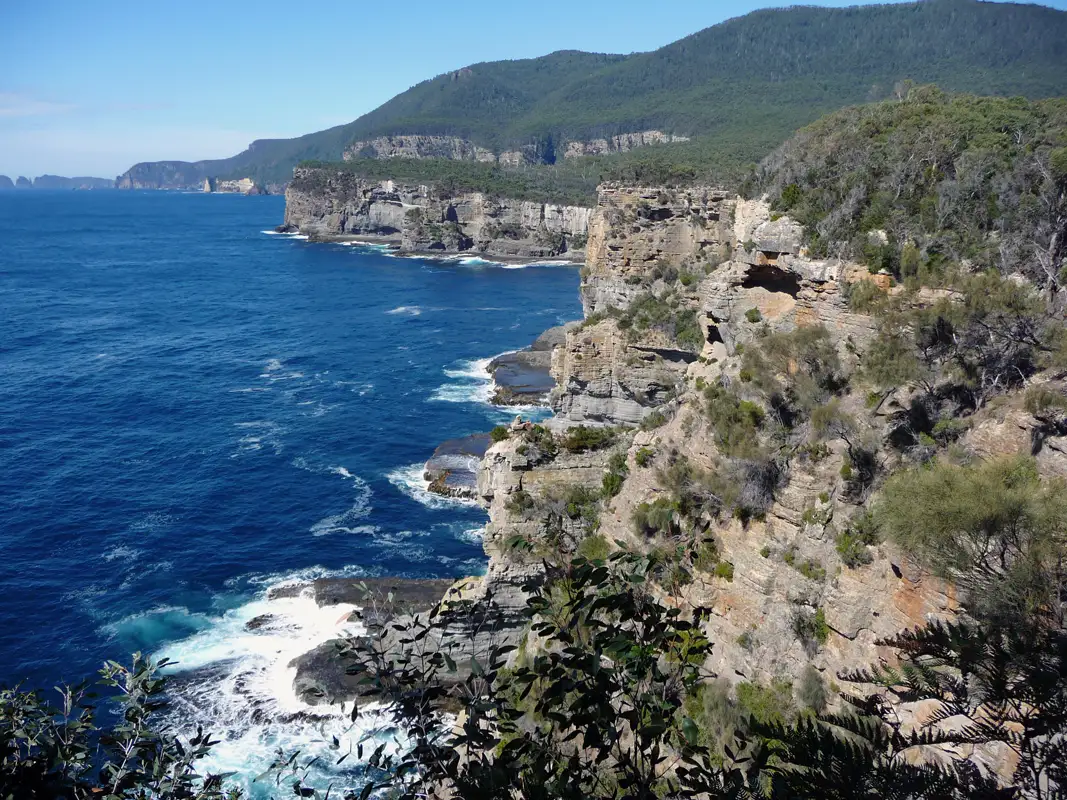
View of Tasman Peninsula coastline.
More from Tasmania: East & West Coast
More from Tasmania: Mt. Field, Cradle Mountains